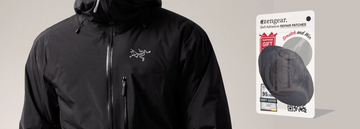We've already shared a brief guide for avalanche safety here. Let's continue this topic in this blog post.
Knowing what to do if and when an avalanche hits could save your life. It’s at this point that the most basic safety provisions (a loud whistle, a compass, high-visibility clothing etc.) can and will make all the difference.
Even so, to underestimate the ferocious power and destructive capabilities of an avalanche to put yourself in harm’s way.
What to Do When an Avalanche Hits
Those who have survived avalanches often say it’s the closest sensation they can imagine to being trapped in a washing machine. Falling ice and snow can quickly accelerate to speeds of more than 80mph, meaning that even a minor avalanche can cause serious damage.
Seeking protection from the nearby landscape is therefore the first thing you should do, if there is any stable shelter or barrier available. Large rocks and cave entrances have been known to save lives when avalanches have hit, as have large trees in the case of smaller avalanches.
Experts also advise removing your skis (if you are wearing them) and get rid of your ski/hiking poles, which could lead to further injuries when the avalanche hits.
Though easier said than done, experts also suggest that the best way to survive an avalanche is to try as hard as you can to "swim" your way to the surface as quickly as possible. Within minutes, the snow and ice of an avalanche can compress to the hardness of concrete, making it practically impossible to get out.
If you find yourself trapped, try to clear an air pocket around your nose and mouth, enabling you to breathe. Use your whistle and any other safety gear you have to attract attention, and if possible stick your hand (or anything else you can) out of the snow to indicate where you are.
Product Spotlight:
Loud Safety Whistle With Paracord Lanyard - Waterproof, Stainless Steel
- DOUBLE TUBES: Super loud waterproof emergency whistle taking less effort to blow and generate high-frequency crisp sound heard at long distances
- KEYCHAIN & PARACORD LANYARD INCLUDED: Each whistle comes with a premium paracord lanyard as well as keychain ring - you can carry it around your neck, in your pocket or attach to your backpack
- LONG-LASTING & PORTABLE: Award winning design, made out of stainless steel, it weighs under 40g and is lightweight, very small and easy to carry
- WEATHER RESISTANT: Excellent airflow design - can be used in all weather environments for camping, boating, hiking, hunting, fishing, outdoor training activities, dog walking, coaches, referees, lifeguard, self-defense, bushcraft, survival, rescue, sports, distress signals, coyote deterrent
Helping Someone Buried in an Avalanche
Research suggests that avalanche victims who are found within 15 minutes have a 90% chance of surviving. Unfortunately, this plummets to just 20% for those who are trapped for 45 minutes or more.
If you manage to locate and retrieve an avalanche victim from the snow, wrap them in a foil blanket and do your best to keep them warm. Provide food and hydration until help arrives, and keep talking to them if they are struggling to remain conscious.
Do not attempt to move them if you suspect they have any major injuries, and consult with the emergency services for advice (if you have a working mobile phone).
Reducing Avalanche Injury Risk
Of course, the most effective approach to avalanche safety is to do everything you can to avoid being caught up in an emergency situation in the first place.
Irrespective of where you plan on heading, it is important to keep a close eye on the weather forecast before you go. There should also be a specialist avalanche report available in most European destinations, measured on a scale of 1-5 in terms of severity.
The most dangerous avalanche conditions manifest quite quickly, so you need to keep an eye on weather conditions at all times. This is particularly true if heading out for several days of time, as overnight snowfall alone could result in dangerous conditions.
Ask the locals for their advice, and consult with an expert guide before heading off-piste. Never take things for granted, particularly if you lack local knowledge and experience.
There is also the option of taking a professional avalanche safety course, during which you learn how to detect the potential signs of an avalanche in advance. You will also be familiarised with all essential post-avalanche first-aid techniques, enabling you to provide better support to those caught up in an emergency.






